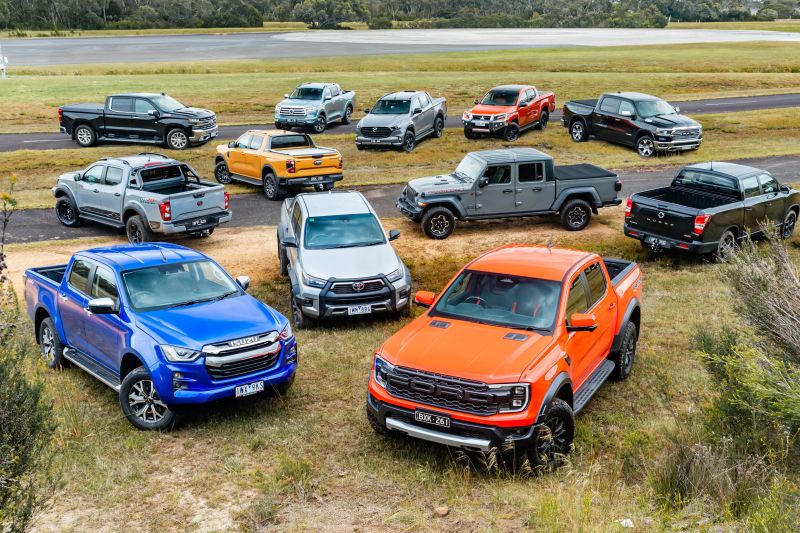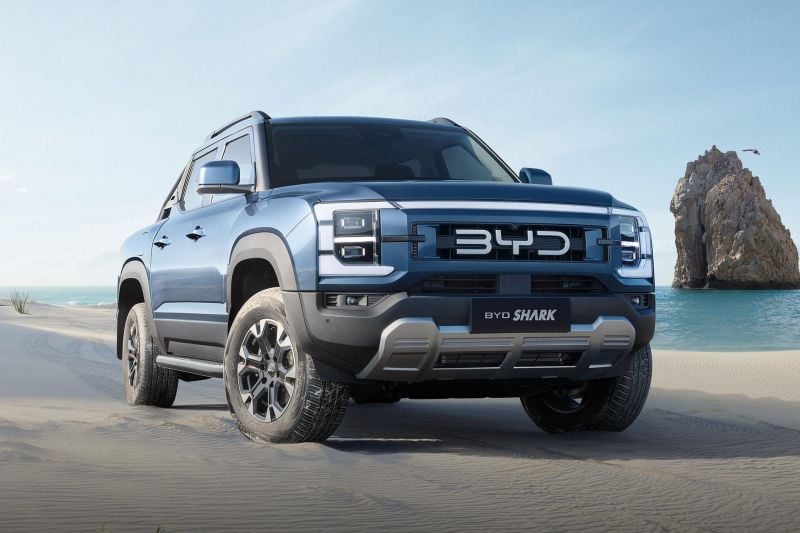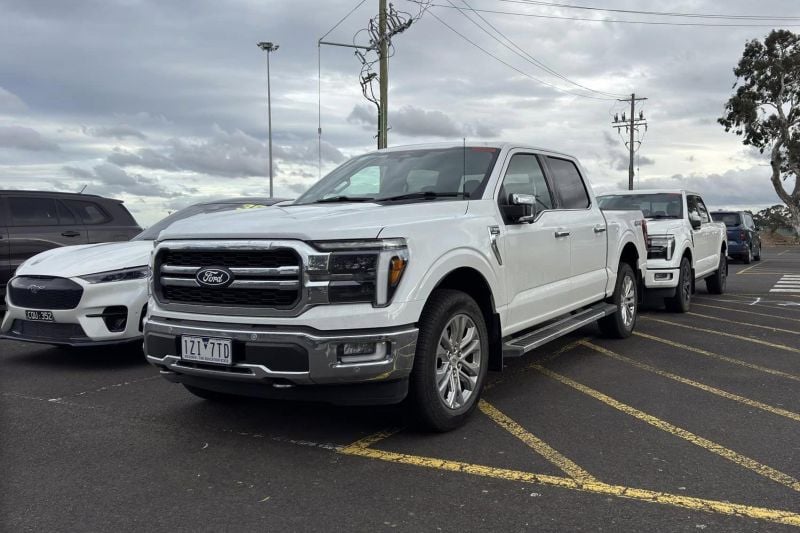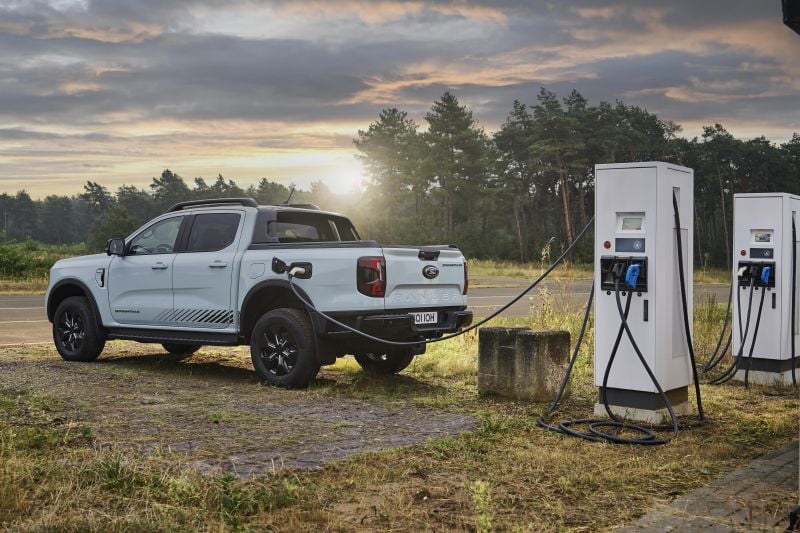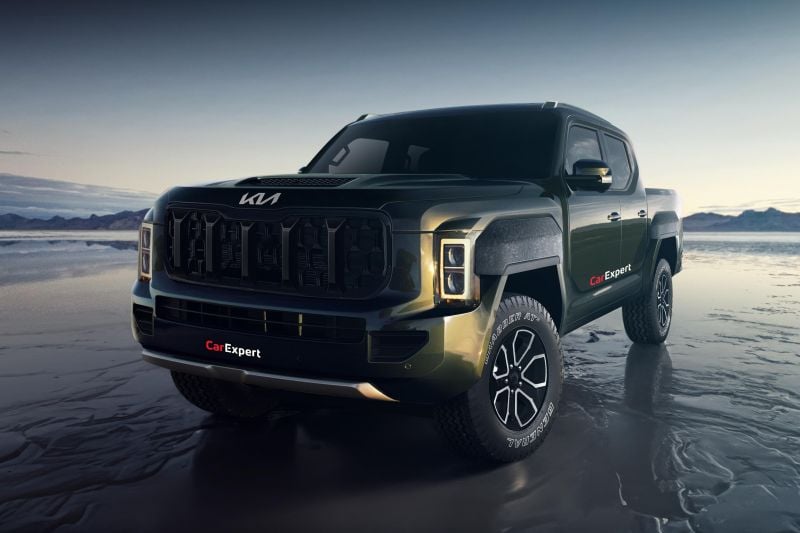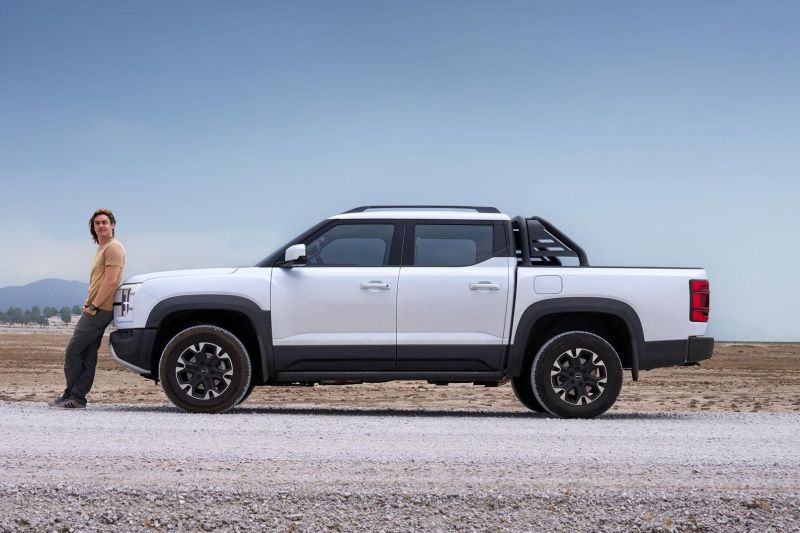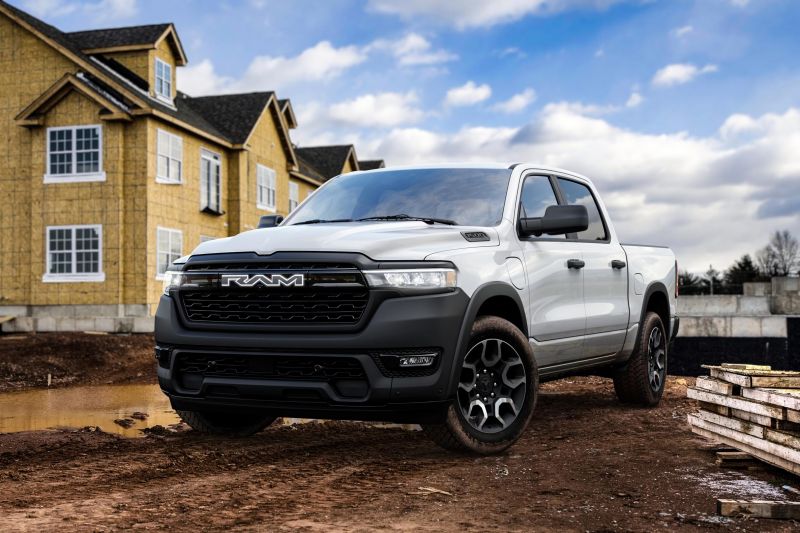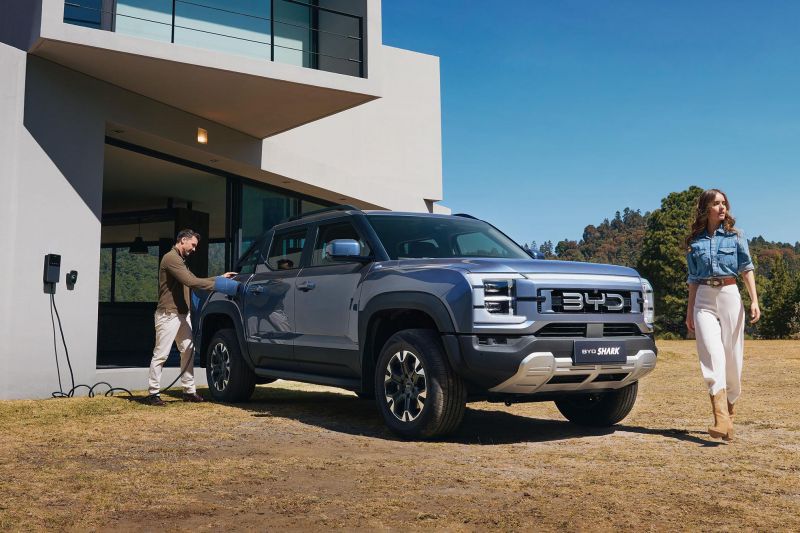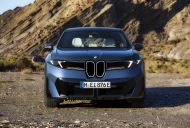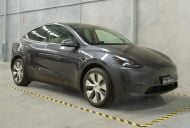The Ford Ranger is the top choice for new ute buyers across Australia, with 63,356 examples sold in 2023.
Long Australia’s second best-selling ute, it overtook the once-dominant Toyota HiLux last year.
The winds of change are continuing to gather speed, however.
A wave of new and innovative utes is expected to roll in over the next 12 months, driving competition in an already hot dual-cab market.
Electrification is the next big thing in commercial vehicles, and let’s not forget about the likely influx of American pickup trucks that Australians have come to adore.
So, is it worth holding out for the next generation? Today, members of the CarExpert editorial team take their pick of tomorrow’s utes.
Paul Maric: BYD Shark
I’m really excited to see where BYD lands with the Shark. The concept of it looks pretty good and if the pricing is decent, it should sell well in Australia.
I don’t know how confident I am in the 1.5-litre petrol engine running the show when the batteries run low, but it’s something I’m keen to test out when we finally get our hands on one.
William Stopford: Ford F-150
The Ford Ranger is my favourite vehicle in its segment, with the Volkswagen Amarok a very close second. Both are about as comfortable to drive as you can get in this segment, while their optional turbo-diesel V6 is a sweet mill that puts rival fours to shame.
However, I’ve become a big fan of full-sized pickup trucks of late. The Chevrolet Silverado 1500, Ram 1500, and Ford F-150 are all very good, but only the latter two are receiving updates imminently (the Chevy just had one not long ago).
The 2025 update to the F-150 brings larger screens inside, while the crappy halogen headlights of the current XLT are getting the chop. Otherwise, Ford doesn’t seem to have messed with the winning F-150 formula.
The Ranger may be a decent family vehicle for something in its segment, but the F-150 is next level when it comes to ride comfort and cabin space.
Ford Australia has had to deal with some embarrassing recalls and setbacks with the rollout of its F-150, but here’s hoping they’ve been able to push past these problems.
If the question was which upcoming utes am I most excited to test drive, it gets a lot harder for me to answer.
LDV’s upcoming electric ute promises to be a vastly more appealing successor to today’s eT60, while the Ford Ranger PHEV and BYD Shark are shaping to be desirable alternatives to today’s petrol and diesel utes – though we still don’t know how much they’ll cost.
Let’s not forget, either, the other PHEV ute confirmed for Australia: the GWM Cannon Alpha Hi4-T.
Josh Nevett: BYD Shark
BYD has proven to be a polarising brand since lobbing on Australian shores, but my experiences with its array of aquatic creatures have been overwhelmingly positive.
That has me very excited about what the Chinese manufacturer can bring to the ute segment when the Shark arrives later this year.
Aside from unique styling inside and out, it’s fair to expect BYD will spec the Shark very generously, as it does with other models across the lineup.
Then there’s the powertrain. The 320kW plug-in hybrid drivetrain is capable of propelling the Shark from 0-100km/h in 5.7 seconds – a fun party trick that tradies will undoubtedly indulge in.
Fitted with a 30kWh battery pack, electric range is a claimed 100km, while claimed combined range from the PHEV system is 850km, and fuel consumption as low as 1.5 litres per 100km is possible with a charged battery.
Such versatility is great for the worksite, but also for those in the market for a lifestyle ute. With a rumoured starting price of sub-$70,000, the Shark is an exciting prospect on paper.
Jordan Mulach: Kia Tasman
Amid increasing competition from China, I’d have to turn to South Korea for a ute.
You just get the feeling that Kia understands Australia and is pulling no punches in making sure the Tasman is as good as it can be for local conditions when it goes on sale.
The cynic in me does think the long-running teaser campaign to build hype is just that, but the fact they’re doing so much testing in Australia across various conditions shows this is a priority for Kia.
Add in that it’ll likely have a proven turbo-diesel engine and a seven-year warranty, it’s going to be hard to go past.
The only thing we absolutely don’t yet know? A price, and that’ll be a big factor for a lot of buyers.
Max Davies: BYD Shark
While the Ranger is an objectively strong package, it’s by no means the “right” choice for everyone – especially if you’re after a plug-in hybrid.
With that in mind, I’m interested to see what BYD has to offer when its Shark washes up on Australian shores sometime later this year.
It’s the brand’s first ute, let alone its first plug-in hybrid ute. While it’s unmistakably taken some design inspiration from the Ranger up front, there’s plenty that should pique the interest of those wanting a ute with a more economical approach.
The Shark has beefy power outputs thanks to its front and rear motors, a claimed total range of more than 800km with the help of a 30kWh battery, and the latest in BYD’s interior design language that looks to be quite the classy package.
Better yet, it’s been indicated at least one variant could cost $68,000 before on-roads, undercutting several Ranger and Toyota HiLux models in the process.
It’s expected to beat the Ranger to the punch on plug-in hybrid tech too, so why wait when you could make the jump sooner?
Jack Quick: Ram 1500 Ramcharger
It hasn’t been confirmed for Australia yet, but the Ram 1500 Ramcharger is a ute that could revolutionise how we see and use this type of vehicle locally.
The American pickup also intrigues me as a supersized Ranger PHEV rival as it likely offers considerably more electric range thanks to its ginormous 92kWh battery pack.
This pickup is powered by a complicated plug-in hybrid range-extender powertrain comprising a 3.6-litre V6 petrol engine that never directly powers the wheels and instead acts as a generator for two electric motors. Total system outputs are 487kW and 834Nm.
Ram is currently targeting a total range of 1110km, including 233km of electric-only range.
One main reason why the 1500 Ramcharger could radically change how we use utes in Australia is the vehicle-to-load (V2L) potential. Sure the Ranger PHEV offers V2L, but it doesn’t have 92kWh of battery to draw from.
This means you could use the battery all day long to power whatever you like, but then still have the petrol engine kick on to guarantee you make it home.
Scott Collie: Toyota Tundra
The Tembo Tusker is tempting purely for alliterative reasons, but Toyota Tundra is almost as satisfying to say – and strikes me as a more exciting pick.
The HiLux is rock solid, but it feels old-school inside. It’s also down on punch compared to the Ford Ranger V6, and even the range-topping GR Sport lacks presence compared to the Ranger Raptor… let alone a Chevrolet Silverado, or Ford F-150.
That’s where the Toyota Tundra comes in. It promises a more refined, luxurious take on the go-anywhere toughness that built the HiLux legend, and introduces a hybrid powertrain that points to what we’re hoping for from the LandCruiser and Prado at some point in the future.
Sure, it’s no oil painting, but there’s no denying it has a presence on the road.
These big American pickups aren’t for everyone, but they serve a purpose for plenty of Australians. The Tundra will make what’s already an interesting corner of the market even more interesting.
James Wong: BYD Shark or Kia Tasman
The Ford Ranger is easily the dual-cab ute benchmark in Australia, and if you’re in need of a new ute urgently it should be towards the top of your list.
If you can wait, the slew of incoming electrified options are certainly interesting, including Ford’s own Ranger PHEV that will lob in 2025.
But I’m particularly interested in the BYD Shark and Kia Tasman, given they are shaping up to be quite compelling alternatives to the range of segment stalwarts that are starting to feel a little long in the tooth.
The BYD will bring a powerful plug-in hybrid system with heaps of range and the sorts of tech largely unheard of in segment.
Meanwhile, the Kia will finally put the rapidly-growing Korean brand in the fighting ring with its Japanese contemporaries in the ute space, likely with a more refined and SUV-like offering than the likes of the HiLux and D-Max.
If you can wait, I’d hold my breath for six months or so to see what comes next…

